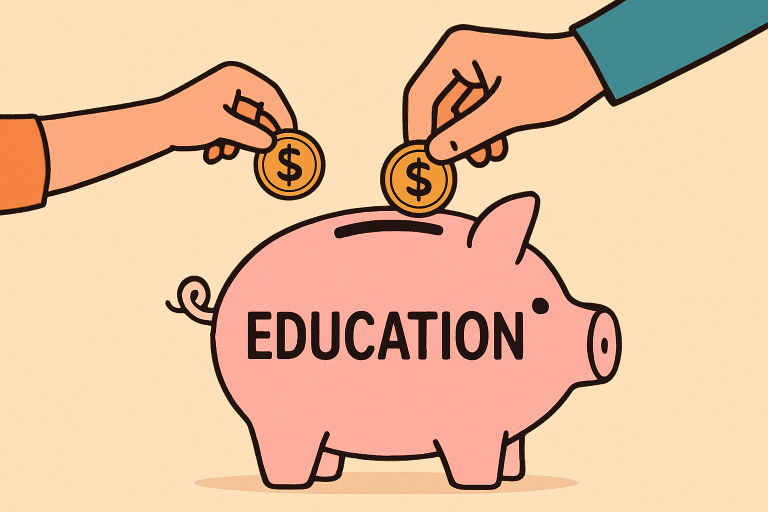Innovative Strategies To Save For Your Child’s Future Education

Key Takeaways
- Starting early with education savings can help reduce future financial stress.
- Diversifying your savings options, including registered plans and low-cost investments, can offer flexibility.
- Setting clear, realistic goals helps families stay on track as their child grows.
- Ongoing education about savings tools is vital for making informed decisions.
- Taking advantage of available government incentives can significantly boost your contribution power.
Why Saving Early Matters For Education
Preparing for your child’s post-secondary education is one of the most important investments you can make for their future. Over the years, tuition fees and associated educational expenses have climbed, making a proactive approach more critical. The earlier you start, the greater the compounding effect on your contributions, often translating to thousands of additional dollars by graduation. This disciplined, forward-thinking habit is a buffer against rising costs and helps ease the pressure of sudden, burdensome lump-sum savings.
Choosing the Best RESP Canada option can be pivotal in maximizing your family’s education savings. Opening a Registered Education Savings Plan (RESP) early provides tax-sheltered growth and unlocks valuable government grants. Families who take the initiative early can leverage these incentives to significantly boost overall savings, giving their child a competitive edge when post-secondary decisions arrive.
Setting Realistic Savings Goals
Developing an effective education savings plan requires clear, attainable goals that reflect your family’s circumstances and aspirations. Begin by researching the current average tuition, residence, books, and living expenses at your preferred institutions—university, college, or vocational school. Online tools and calculators from reputable sources such as The Globe and Mail can help estimate future costs, considering inflation. Revisit and adjust your goals annually, using new information about educational trends or personal financial changes to ensure ongoing progress.
Diversifying Your Savings Tools
Building a robust fund for future education doesn’t need to rely on a single method. Instead, diversifying across several savings accounts and investment vehicles can help manage risk and enhance growth potential. Alongside RESPs, consider tapping into high-interest savings accounts, Tax-Free Savings Accounts (TFSAs), and low-fee mutual funds for added flexibility. This balanced approach allows your savings to withstand market fluctuations while keeping capital accessible when needed.
To better understand government-supported savings programs and maximize available incentives, reference resources from government agencies and trusted financial publications. For example, the Government of Canada’s official resource outlines grants, eligibility, and matching programs in detail, helping families tap into every available advantage.

Making Consistent Contributions Count
Consistency is the foundation of a successful savings journey. Establishing automatic monthly contributions—even in modest amounts—can make a substantial difference over time. Treating your education savings like a recurring household bill helps ensure they remain a financial priority. This steady investment rhythm also relieves families from the stress of catching up later and ensures that market highs and lows are averaged out, potentially increasing overall returns.
Understanding Government Incentives
Many governments offer generous grants and matching programs to support post-secondary savings. In Canada, the Canadian Education Savings Grant (CESG) boosts RESP contributions with additional funds, up to specific annual and lifetime limits. Staying proactive with contributions and monitoring grant eligibility is critical; these incentives can add thousands to your child’s account, provided you remain attentive to deadlines and compliance requirements.
For families seeking a deeper understanding of how these grants work, major news outlets like CBC News regularly publish updates and analysis on new educational policies and funding opportunities.
Teaching Kids About Money Along The Way
Involving your children in the education savings process demystifies finance and lays the groundwork for lifelong money management skills. Start with simple lessons—like the value of saving, the concept of compound growth, or the costs associated with education. Encourage age-appropriate participation, such as tracking their small savings goals or helping to deposit gift money in their accounts. These early habits pay dividends in adulthood as children develop confidence in managing larger financial decisions.
Adapting As Life Changes
Your family’s education savings journey will inevitably encounter hurdles and changes. Conduct an annual strategy review, adjusting your contributions or investment choices. A job change, a new addition to the family, shifts in the education landscape, or revised aspirations all warrant a reassessment. Stay flexible and open to pivoting strategy—ensuring your plan remains aligned with new realities and opportunities.
Common Challenges And How To Overcome Them
Unexpected Expenses
- Build a separate emergency fund to protect education savings from unplanned withdrawals.
Market Volatility
- Balance conservative and growth-focused investments to safeguard principal while still allowing for some capital appreciation.
Competing Priorities
- Automate transfers and establish regular check-ins to maintain momentum and motivation.
Conclusion
The path to financing your child’s education involves decisions, opportunities, and sometimes hurdles. By starting early, setting clear goals, choosing the best RESP Canada, and regularly reviewing your strategy, you’re investing not just in future tuition costs but also in your child’s options and opportunities. Diversifying your savings, leveraging government programs, and making financial education part of the journey can help families of all backgrounds empower the next generation with the tools they need to thrive.

